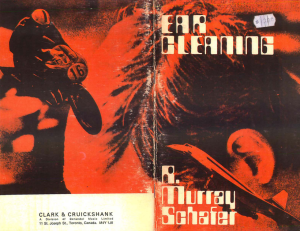Worth mentioning that this is not as messy as it sounds. Ear Cleaning is a practice coined by R.M Schafer, founder of the World Soundscape Project, and pioneer in soundscape composition and ecology.
As you can hear from this short recording Schafer merely brings things to his audience’s attention. That is, simply to stand up and sit down cannot be done silently. You can hear him state that it is an exercise he does with children but it is necessary for anyone of any age to do this. His concerns are therefore aimed at the future generations; many of his later text were centred on listening exercises and musicmaking.
Ear Cleaning is a simple exercise that requires no apparatus or extra tools other than your ears and your complete attention. Barry Truax, in the Handbook for Acoustic Ecology, defines it as:
“Any process that encourages a person to listen more discriminately, particularly to sounds of the environment. The term was originally used by R.M. Schafer in his book Ear Cleaning (Toronto, BMI Canada, 1967) to contrast with the traditional practice of ear training in music education which concentrates on the identification and reproduction of intervals, chords, melodies and so on. A set of ear cleaning exercises is given in the above publication.”
(Source : Handbook for Acoustic Ecology)
There are plenty of books and papers to read up on about the subject. I recommend:
Ear Cleaning: Notes for an Experimental Music Course by R.M. Schafer
“Before ear training it should be recognised that we require ear cleaning”
Ear Cleaning, in my opinion, is a necessary practice for all recordists who want to be part of the world they record.


